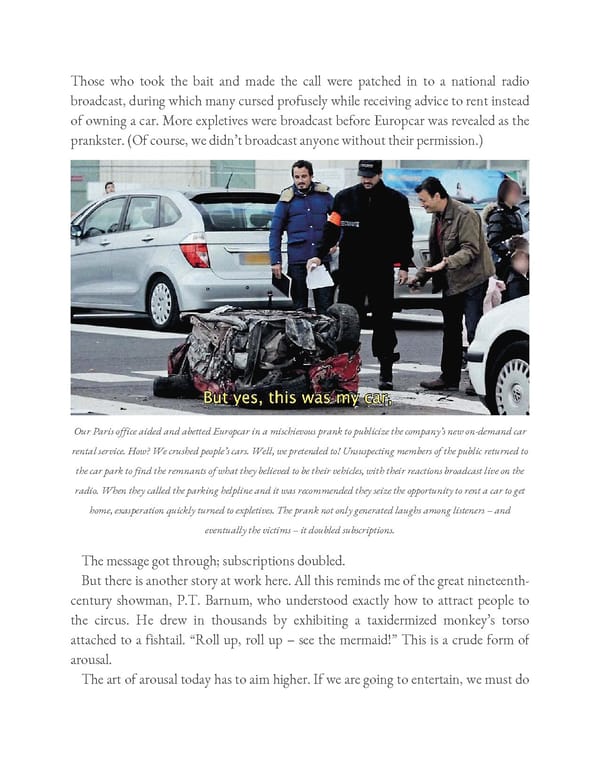Those who took the bait and made the call were patched in to a national radio broadcast, during which many cursed profusely while receiving advice to rent instead of owning a car. More expletives were broadcast before Europcar was revealed as the prankster. (Of course, we didn’t broadcast anyone without their permission.) Our Paris office aided and abetted Europcar in a mischievous prank to publicize the company’s new on-demand car rental service. How? We crushed people’s cars. Well, we pretended to! Unsuspecting members of the public returned to the car park to find the remnants of what they believed to be their vehicles, with their reactions broadcast live on the radio. When they called the parking helpline and it was recommended they seize the opportunity to rent a car to get home, exasperation quickly turned to expletives. The prank not only generated laughs among listeners – and eventually the victims – it doubled subscriptions. The message got through; subscriptions doubled. But there is another story at work here. All this reminds me of the great nineteenth- century showman, P.T. Barnum, who understood exactly how to attract people to the circus. He drew in thousands by exhibiting a taxidermized monkey’s torso attached to a fishtail. “Roll up, roll up – see the mermaid!” This is a crude form of arousal. The art of arousal today has to aim higher. If we are going to entertain, we must do
 Ogilvy on Advertising in the Digital Age Page 146 Page 148
Ogilvy on Advertising in the Digital Age Page 146 Page 148